Microworld
It’s easy to get the impression that the animals that dominate African landscapes are mostly large grazers and predators. But a closer look reveals that the savannas and forests of Gorongosa are filled with thousands of species of smaller animals – insects, spiders, lizards and frogs – whose role in these ecosystems may be even more important than that of their larger cousins. These tiny animals often go unnoticed, or are sometimes perceived as a nuisance. But without them, life on the plains of Gorongosa would be very difficult, if not impossible.
It’s thanks to insects and other small creatures that plants get pollinated, soils are made more fertile, water in rivers is filtered, disease-carrying pests are kept in check, and baby birds get fed. These small animals also provide similar, invaluable services to farms surrounding Gorongosa. With the exception of the malaria-carrying mosquito, virtually none of Gorongosa’s smaller organisms pose any risk to humans. Rather, we should appreciate them for their beauty and value to the natural world.
The true diversity of Gorongosa’s micro world is still a mystery, and the exact numbers of species of insects, spiders, or frogs living in the Park are unknown. But each day brings new discoveries: recently, scientists have confirmed that at least 200 species of ants live in Gorongosa, and some of these can be found nowhere else in the world. The diversity of grasshoppers, praying mantids, beetles, and frogs are similarly rich. It’s possible that the diverse ecosystems of Gorongosa National Park are home to at least 50,000 species of insects and other small animals
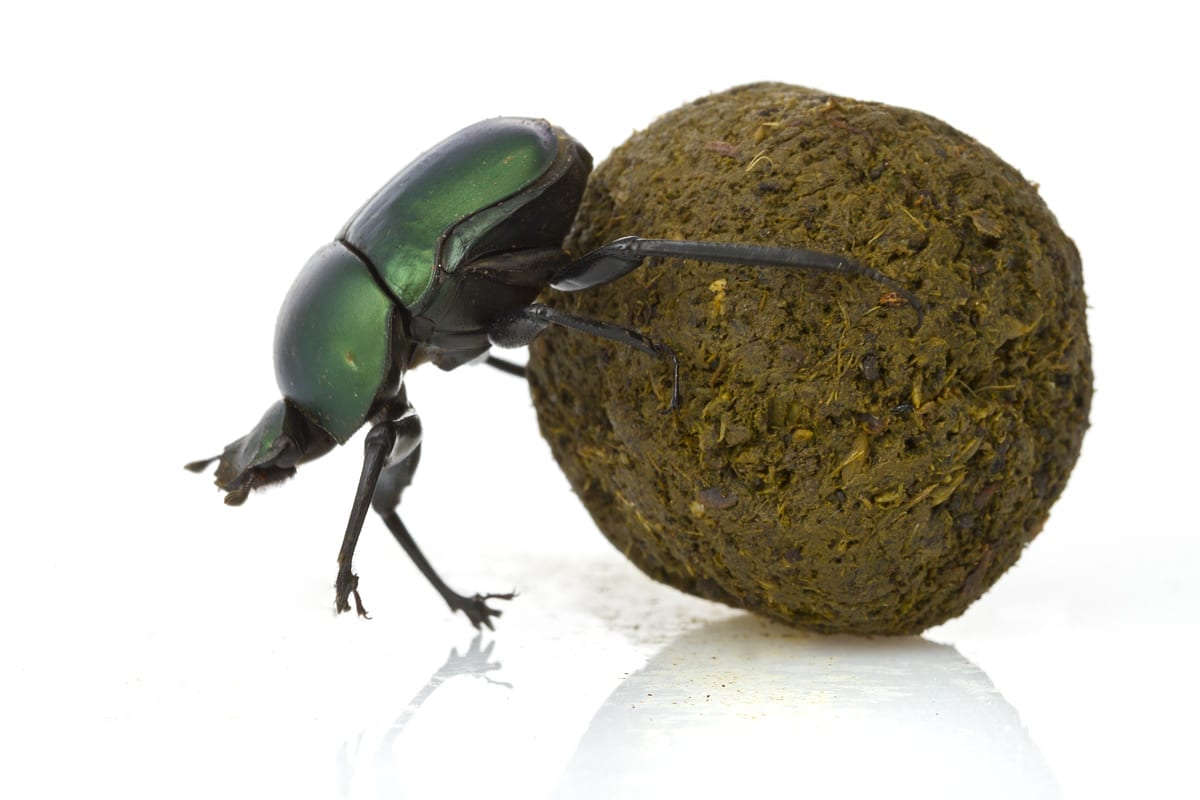
Dung Beetles
Dung beetles are critically important members of the savanna that dominates Gorongosa, and without them and their waste removal service, the place would quickly sink under layers of dung produced by thousands of animals. When they break down dung, they return nutrients to the soil, which helps plants grow, feeding the herbivores and producing more dung for the beetles. Dung beetles are not only useful and pretty, they are also supremely cool – a recent study showed that they are the only insects known to navigate using the position of the Milky Way and other galaxies. Only humans (and possibly a few other animals) use the position of celestial bodies to find their way around.
Matabele Ants
Matabele ants (Pachycondyla analis) are large, black ants, often seen crossing roads in dense, long columns. Each of these columns represents a different colony of these insects, and is made up of sterile female workers. Matabele ants, named after a tribe of Zulu warriors, are voracious predators that specialize in hunting termites. The hunt begins with a single scout locating a vulnerable opening to an underground termite nest. She then leads an army of several hundred workers towards the nest, where each ant kills several termites, and carries them back in their mandibles. The prey is then divided among the workers, the queen, and the developing larvae in the ant colony.
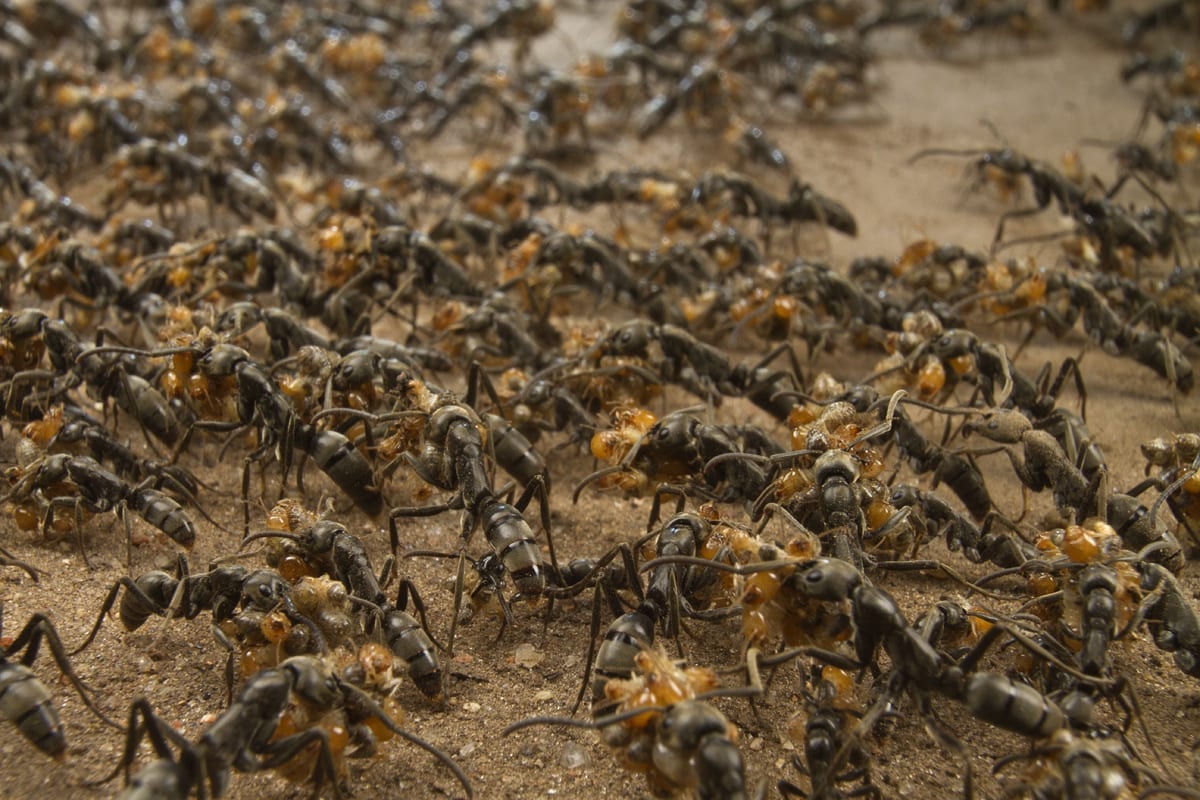
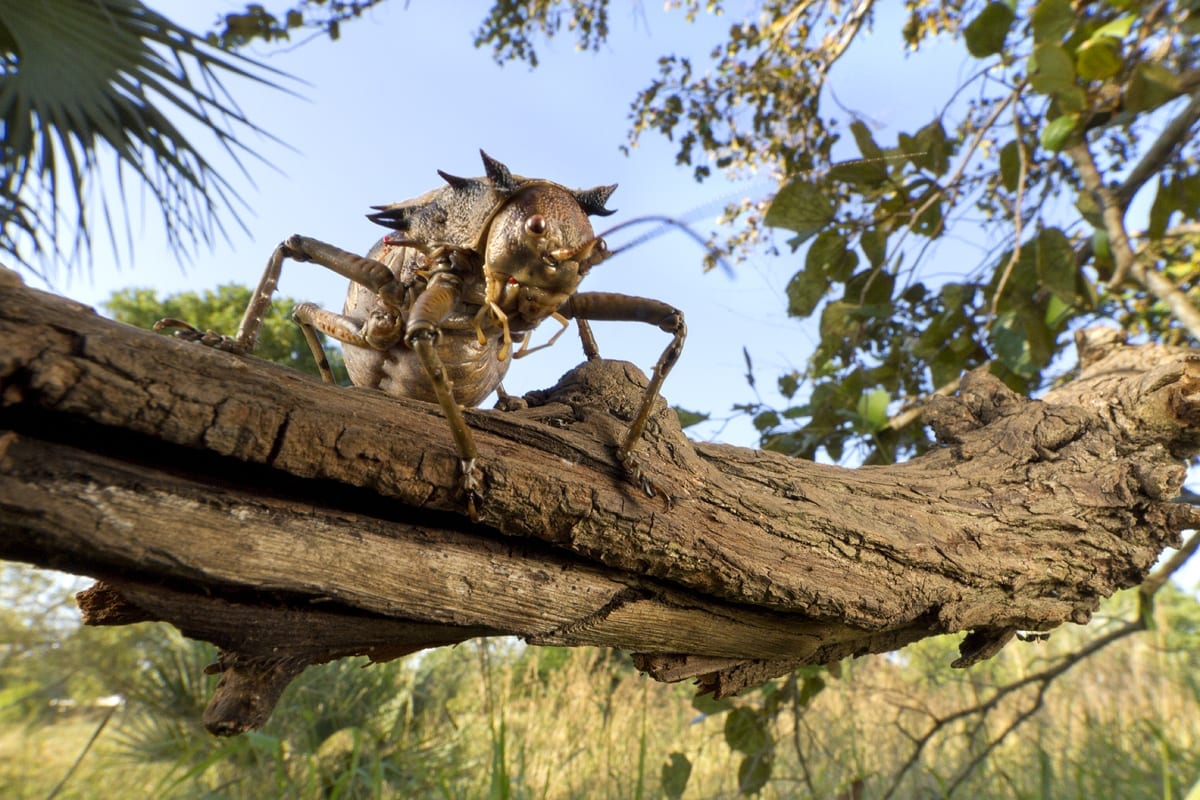
Armored katydids
Armored katydids (Enyaliopsis petersi) are large, robust insects that look scary, but are completely harmless. Despite their bulky, spiny appearance they are close relatives of green katydids that often come to lights at night around the camp in Gorongosa.
In the insect world, they are equivalent to rhinos – slow, peaceful grazers, who defend themselves only if provoked. Armored katydids feed on the leaves and flowers of many plants. They can’t fly, but they have tiny wings, completely hidden under the spiky shield behind their heads. These are used to produce long, chirping songs that you may be able to hear on a peaceful Gorongosa night.
Orb Weavers Spiders
Orb weaver spiders are well represented in Gorongosa. Some have stunning shapes and colors, and none more so than the Kite spider (Gasteracantha). The large spines on its body are a defense against birds who like to feed on spiders, and also help them blend among branches where it spins its orb. Like all spiders, this species is a predator, feeding mostly on small insects that fall into its sticky web. And, like nearly all spiders, it is completely harmless to humans. The legs of Kite spiders are adapted for hanging from the silk web – if placed on a hard surface they are almost incapable of normal walking.
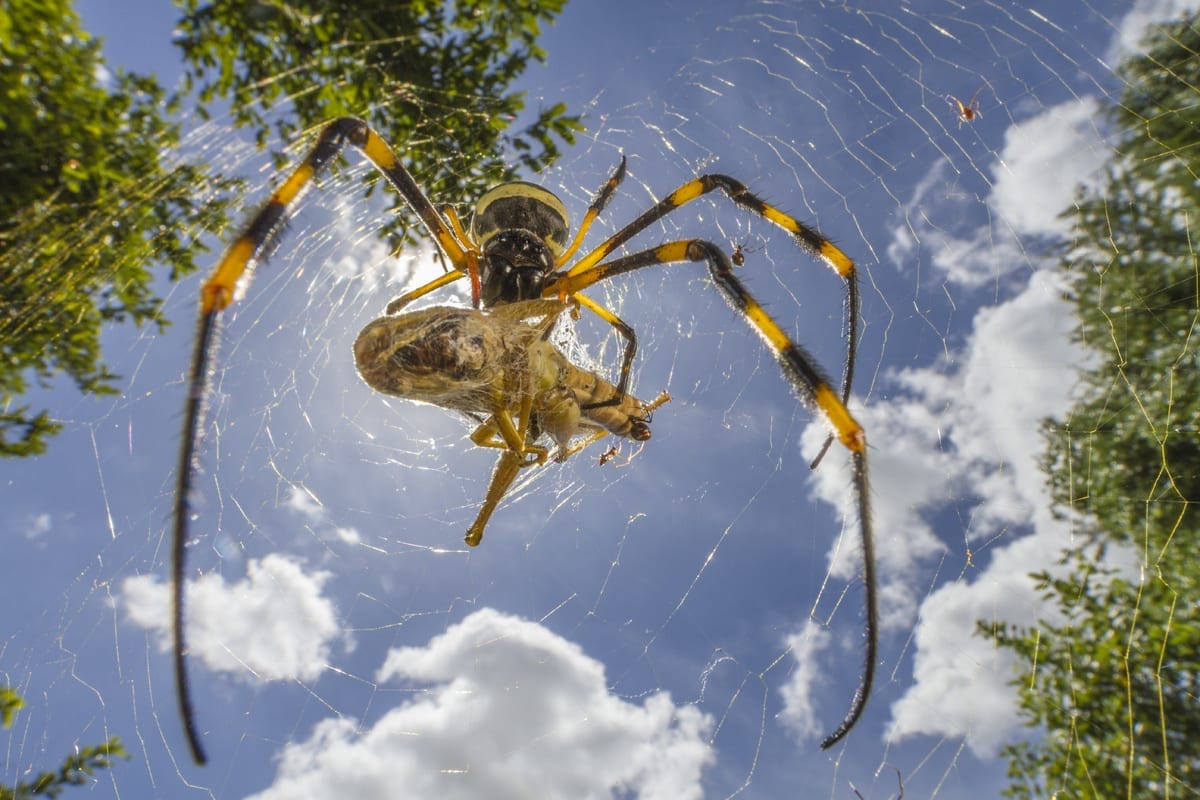
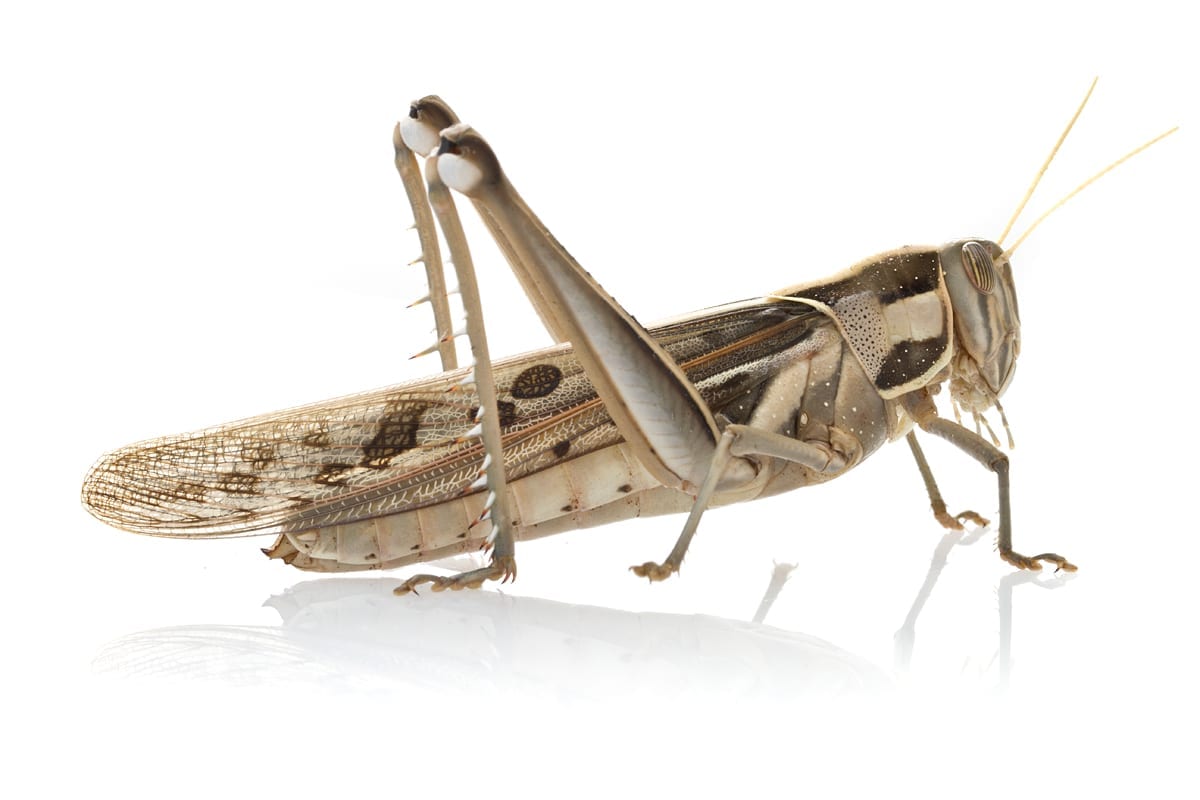
Grasshoppers
All grasshoppers feed on plants. On the plains of Gorongosa they are similar to large grazers, like buffalo and wildebeest – by eating some plants, allows others can flourish and the diversity of plants is kept in balance. Although they compete for food with antelopes and other herbivores, their presence not only assures that no single plant species overtakes the savanna, but they also provide highly nutritious food for small mammals and birds.
Praying Mantids
Praying mantids are sit-and-wait predators, and could be considered the insect equivalent of a leopard. Gorongosa has a particularly rich diversity of these beautiful insects, and nearly 40 species have been recorded in the Park. The high number of praying mantids is a good indicator of the health of this ecosystem – just like lions and other hunters, praying mantids need a large variety of prey, which can only exist in a rich habitat like Gorongosa.
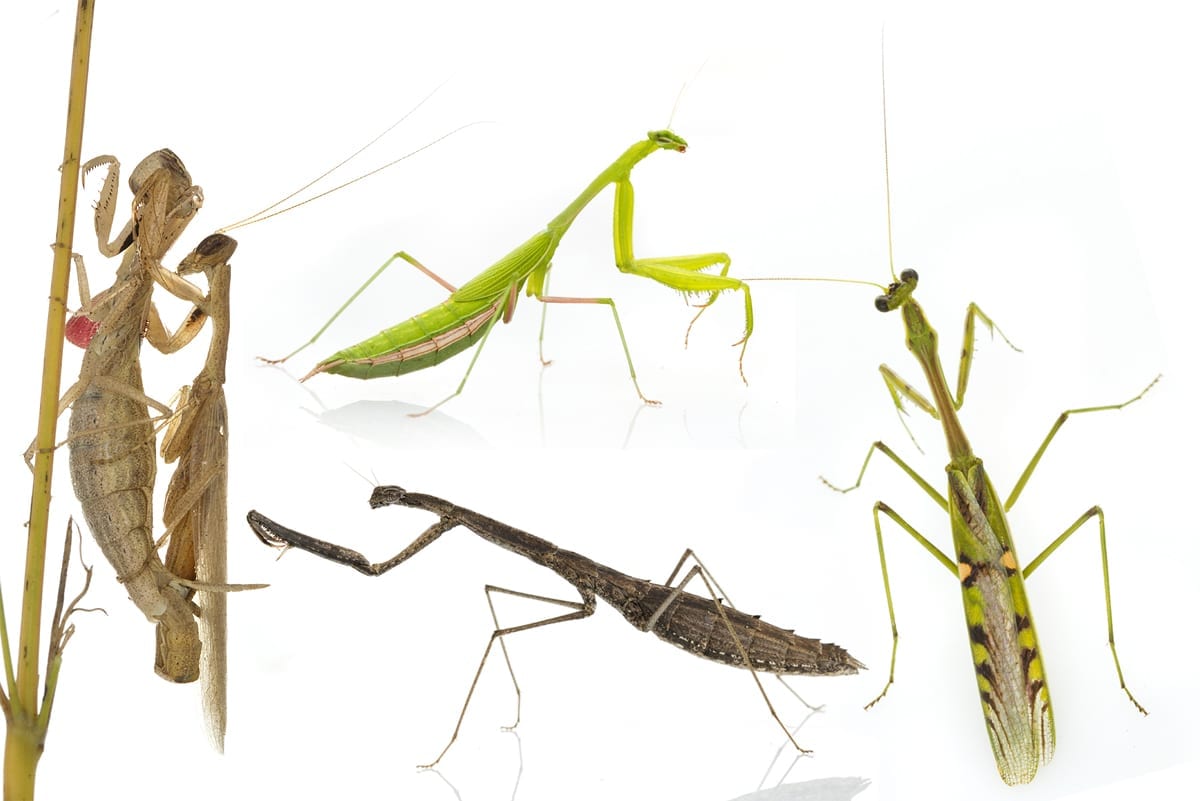
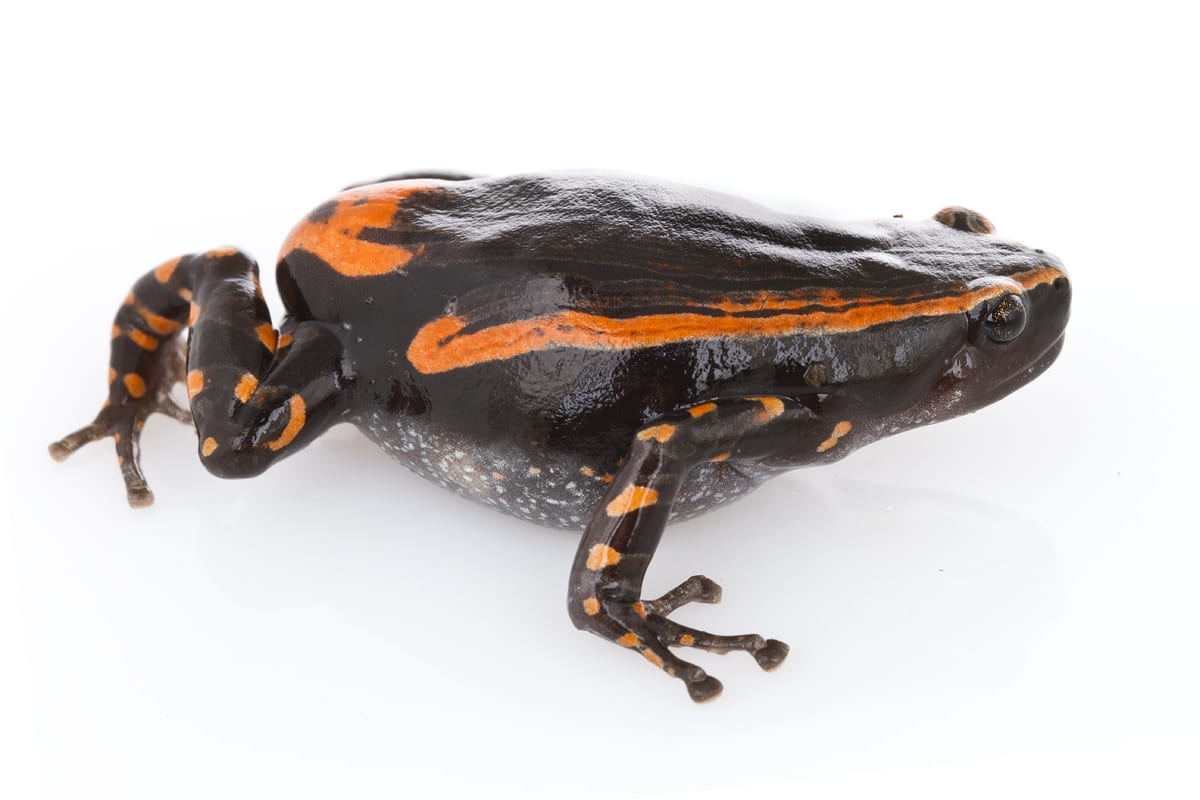
Rubber Frog
Rubber frogs are not very good jumpers, but they don’t need to be – their skin contains toxins that most predators will be glad to avoid. They advertise this toxic warning with contrasting, black and orange coloration. Rubber frog’s skin secretion may cause skin irritation in humans, and thus it is wise not to touch them.
Our Mission
Our Mission
Advance an integrated multi-partner approach to conservation and to people-centred development. The Gorongosa Project protects the Park’s biodiversity and ecosystem services and unlocks its economic potential for the community inhabitants of the Gorongosa Buffer Zone, Sofala Province, Mozambique and further afield.
Our Vision
A thriving, biodiversity-rich, Greater Gorongosa conservation landscape, which supports Sofala Province as an engine for resilient and sustainable development enabling nature experiences and wellbeing for its people, enriching all of Mozambique and the world.
A Park for Peace
On 1 August, 2019 a historic ceremony was held in Gorongosa to celebrate the Cessation of Hostilities Accord between the leaders of the Government of Mozambique and the opposition Renamo Party. The accord established Gorongosa National Park (GNP) as a ‘Park for Peace’, delivering human development to the communities that share the greater landscape.